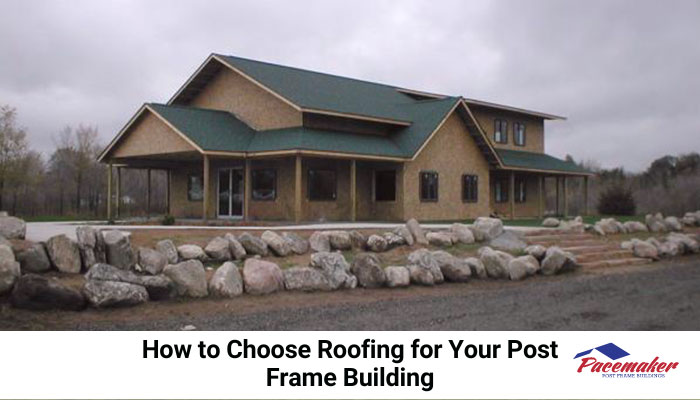
Choosing the right roofing style and material for your new post frame building depends on the local weather, material durability, and the structure’s aesthetics. After all, you will want the roofing to be effective in keeping the building dry and shedding heavy snowfalls.
Selecting between gabled roofs, gambrel, hip, monitor, mansard, and even mono- or multi-slope roofs becomes a practical weather question. Of course, it is also an aesthetic choice based on personal taste. Furthermore, you may want to consider how the new structure fits in with the surrounding buildings.
Making the Decision
One of the most essential considerations is the amount of snow you receive in winter. Certain roof designs involve shapes and angles that make removing snow problematic. Others make the job easier by eliminating shapes and angles that are difficult to reach.
Working with a professional post frame company during the design process helps to eliminate many problems some owners experience later.
Types of Roofs
While aesthetics can play an important role, owners must also ensure they address their practical needs first. Here are some roofing ideas to consider while creating the building design.
- Gable Roof
A simple gable roof is the most common. This roof style comprises two sections that join at the center and slope downward at various angles to the walls. Although there can be many variations of a gable roof, this option is generally the least expensive. It is the best option for areas with heavy snow.
Vents can be installed at each end wall to ensure a continuous flow of air. This can help reduce the potential for condensation accumulation.
- Gambrel Roofs
A gambrel roof is the traditional barn shape with two slopes on each side of a ridge. Typically, the upper slope is at a lesser angle than the lower slope, which adds to the interior space of the upper level. The builders will use taller truss profiles to accommodate the shape. Due to the method of construction, a gambrel roof is not the best for areas with regular heavy snow.
This style tends to be more expensive than the gable-roof option but offers a far more traditional look to your setting.
- Hip Roof
The hip roof has all four sides sloping down to the walls. These require less diagonal bracing and tend to perform better than many options in high winds and extreme snow conditions. Generally, hip roofs require extra material to create, so they are usually more expensive.
- Monitor Roof
A monitor roof is a bit more complicated, having a raised section that runs along the ridge of a double-pitched roof. Below may be lean-tos or enclosed units used for various purposes like storage, additional workspace, offices, and more.
The real advantage is that these offer additional headroom for an office, workshop, attic, or entertainment room. However, the different angles can complicate snow removal.
Ventilation
Selecting a roof structure that allows plenty of ventilation is critical and will keep your interior dry and free of mildew, mold, and other issues. Creating a clear flow of air through the structure can be achieved with ridge vents, vented eaves, gable vents, windows, cupolas, and exhaust fans. These allow for air to enter and leave continually, keeping the contents from accumulating condensation.
Metal or Shingles?
Applying metal to your roofing is undoubtedly cheaper, and typically lasts three times longer than shingles. However, shingles tend to soften the appearance of the structure and will often fit with the neighborhood and surrounding structures.
Keep in mind that metal roofing can withstand snow, ice, and wind far better than shingles, so this material is likely to be a better choice in severe conditions. However, metal roofing also tends to be a bit louder during a storm.
If you opt to use shingles, ensure that you check the roof after any major weather event and replace any loose pieces.
Contact Pacemaker Post Frame Buildings
Contact the professionals at Pacemaker Post Frame Buildings to help with your roof decision for any agricultural, equestrian, commercial, storage, civic, or suburban construction. The experts are available to guide you toward the right choices during the design process.
Serving satisfied customers in Northern Indiana, Southwestern Michigan, and Northwestern Ohio, Pacemaker has evolved the post frame process for over forty years and understands the needs of its clientele.
Visit the Pacemaker Post Frame website to see the results of many of their stunning finished projects.
You can find answers to many of your questions on the Pacemaker website. Or you might speak to a professional directly by calling 888-834-4448.
